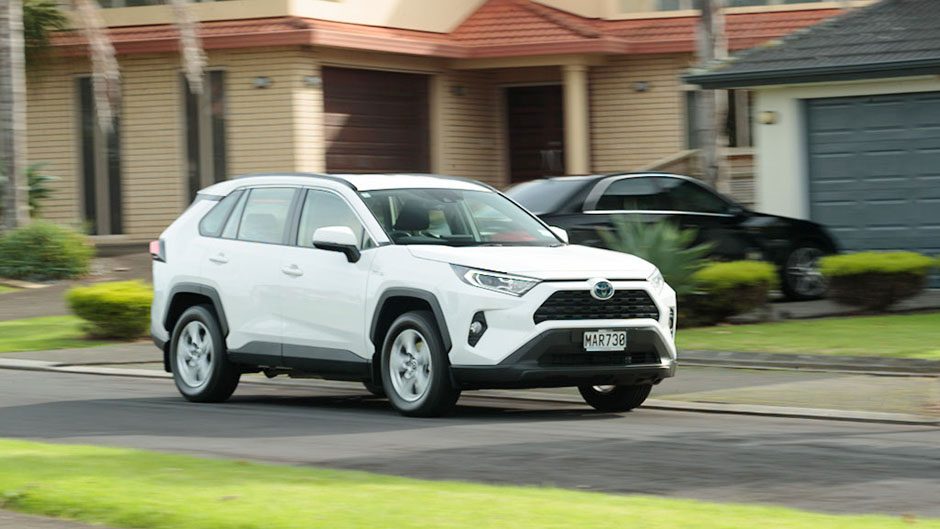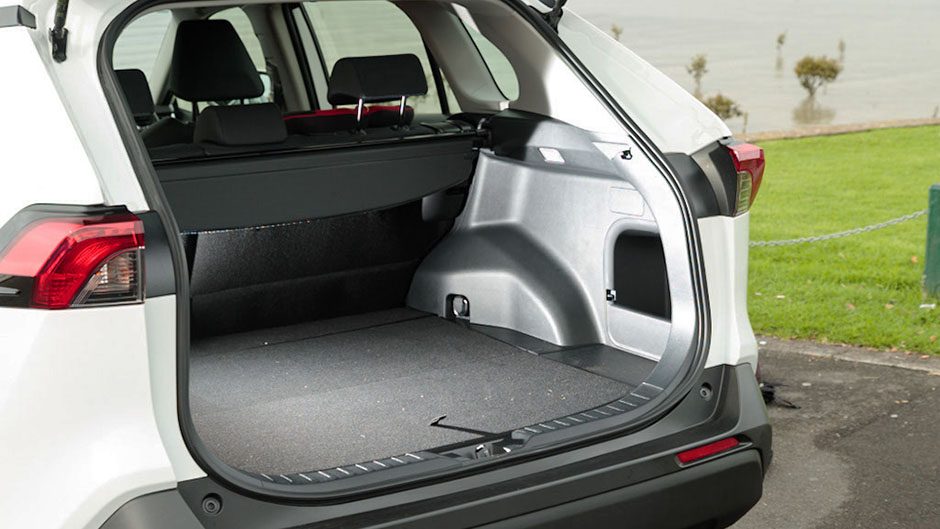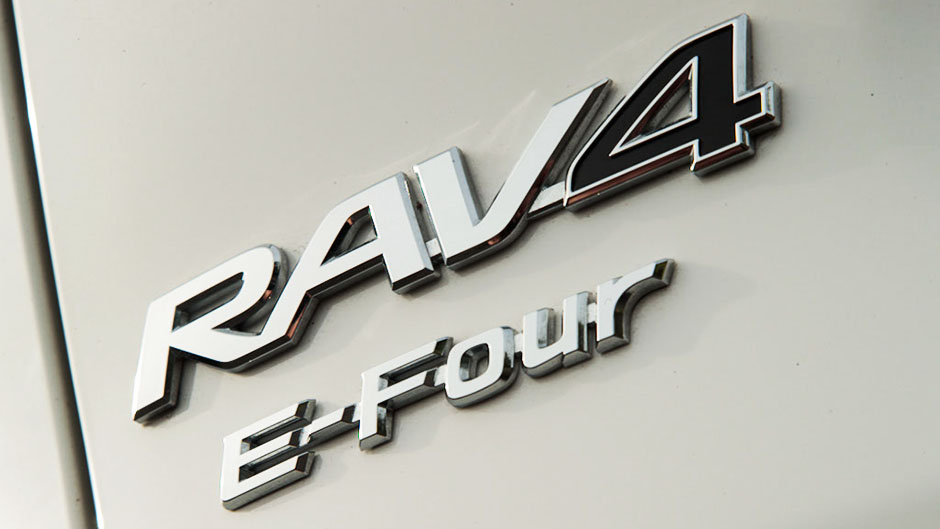The popularity of the hybrid Corolla (and Camry) has seen the regular Prius dropped from the local line-up. Clearly people prefer their hybrids to look normal. The current Prius seems to have been a victim of the Fukushima disaster, radiation clearly affecting its development during the styling phase.
The RAV4 hybrid doesn’t look any different from the ‘normal’ models but packs a fuel sipping punch. It’s the most powerful RAV4 too, so is the quickest and yet uses the least gas. Plus it drives well and doesn’t carry a cost premium. The hybrid uses a version of Toyota’s new 2.5-litre engine which loses 21kW and 22Nm for the sake of emissions but the electrics bolster total system output to a combined 163kW.
There’s no torque figure given but the pull certainly feels healthy. The drivetrain comprises the hybrid gubbins and an 88kW/200Nm motor on the front axle with a 40kW/120Nm motor on the rear enabling AWD. The system decides which motors are used when. There’s a 245V NiMH battery under the rear seat that is charged by the hybrid system’s generator.

Like the styling, the controls of this hybrid are conventional; no funny gear lever, no regenerative braking to play with, just an EV mode button you might press occasionally. So there’s nothing complex to think about when driving, just enjoy the smooth and torque-rich pull while noting how little fuel it uses. It’s rated at 4.8L/100km on average, and piloted without much thought to economy, we managed 5.7L/100km for a week of urban driving, performance testing and a bit of a strop through the hills.
When tasked with a few bends to dispatch, the hybrid RAV acquits itself well. The output range of the rear motor is such that when you’re weaving through curves it gives a slight rearward torque bias to the dynamics. It therefore possesses a more neutral stance in the bend, rather than delivering an abundance of understeer. It can’t replicate the feats of the Adventure with its active torque vectoring diff, and it’s not class leading in a dynamic sense, but it is somewhat interesting to drive.
It is heavier than the 2.5, but that mass does feel well distributed while the steering gets the job done. There is some body roll to work with and while the progress is generally refined, not all the bumps are seamlessly blotted by the rear end.

The response from the e-CVT isn’t bad either and there’s some decent power brought to bear here, the hybrid showing a clean pair of tailpipes (literally and metaphorically) to the 2.5 Adventure (7.8sec 0-100km/h vs 8.9sec) and it’s quicker on the overtake too. There’s some initial sponge in the brake pedal action but they are easier to modulate than hybrid stoppers have been in the past.
People who get this as a rental will be sure to make that flight out of Queenstown if they’re running a bit late; it’ll hold on to the corners of the Crown Range road more convincingly than the old model could ever manage. This GX variant is destined for fleet and rental purposes mainly, and so there are hard plastic door tops, they’ve deleted those nice rubberised door pulls, there’s cloth trim and fewer USB ports. No powered tailgate either but it still opens up just fine. The only thing we really miss is a smart key.
The steering wheel may lack for a leather wrap but it does come with buttons for the active cruise control. Yes, this base model has all the good driver aids and safety spec while the infotainment system comes with sat nav but no Carplay or Android Auto. Urban sorties have always been a hybrid’s thing and around town this is far superior to the regular 2.5 RAV4.

The torque drops earlier and the e-CVT’s action is smoother while helping deliver better acceleration in traffic flows. Move off calmly from a stop and the motors will do the initial lugging, though the engine is quickly in to help gather more speed. The hybrid system will drop the ICE in and out of play when it reckons the electrics can maintain your pace. This can happen at all speeds, even at 100km/h on the motorway, but we’re talking about steady-state cruising on a dead flat road.
The GX, on more SUV-like tyres, also rides better than the 19-inch shod Adventure. Hybrids used to come with compromises, usually in capability with a no tow policy, and less luggage space. But they tell us this RAV is able to haul the same 1500kg as the regular 2.5 and with the battery stored under the rear seat, there’s no reduction in boot space. It offers split folding too.
The real kicker is there’s not much of a premium to pay for this emissions lowering tech, certainly less than smelly old diesels used to command.
There are three hybrids, this GX is $39,990 (on the road, no negotiation), the Limited is $48,990 (so cheaper than the Adventure) and the GXL is $43,490, a premium of $1500 over the 2.5 version.
With a mix of lower emissions, easily tapped grunt and SUV capability without compromise, it’s hard to argue against this. Hmm, it seems hybrids have truly come of age.
| Model | Toyota RAV4 GX hybrid | Price | $39,990 |
| Engine | 2487cc, IL4, DI, 131kW/221Nm | Drivetrain | e-CVT, e-AWD |
| Fuel Use | 4.8L/100km | C02 Output | 112g/km |
| 0-100km/h | 7.85sec | Weight | 1693kg |


